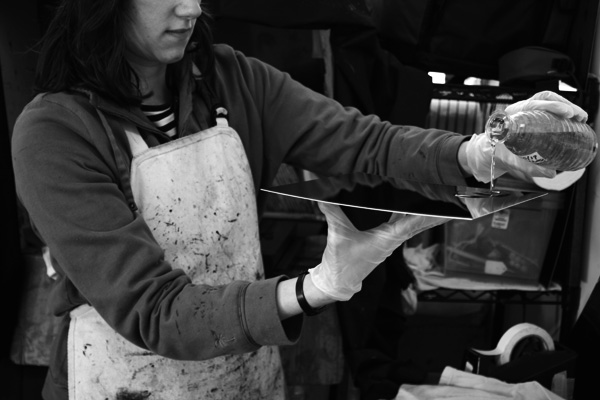The process involved adding a soluble iodide to a solution of collodion cellulose nitrate and coating a glass plate with the mixture.
Collodion process copper sheet plate.
In the darkroom the plate was immersed in a solution of silver nitrate to form silver iodide.
Calotypes were reproducible but suffered from the fact that any print would also show the imperfections of the paper.
Wet dry plate collodion.
The plate still wet was exposed in the camera.
The plate is then made light sensitive by placing it while still tacky into a solution of silver nitrate.
About the collodion positive process.
Copper sheet and copper plate find use in a huge array of applications.
After removal from the bath soak the plates in distilled or rain water so as to remove all but a mere trace of nitrate of silver.
Daguerreotypes were better than calotypes in terms of detail and quality but could not be reproduced.
Collodion is normally used in its wet form but can also be used in humid preserved or dry form at the cost of greatly increased exposure time.
This process was introduced in 1851 by frederick scott archer and marks a watershed in photography.
Copper sheets plates are also noted for their high electrical and thermal conductivity and good corrosion resistance.
This process like the two preceding is a mere modification of the taupenot process the principal difference between this and the taupenot being that the plate is sensitized only once.
One of few metals that doesn t need to be extracted from ore i e it is directly usable in its natural state copper exhibits excellent thermal and electrical conductivity good ductility and a natural resistance to corrosion.
The collodion process mostly synonymous with the collodion wet plate process requires the photographic material to be coated sensitized exposed and developed within the span of about fifteen minutes necessitating a portable darkroom for use in the field.
This part of the operation is.
The collodion process is an early photographic process.
To begin the process the glass or metal plate is polished and carefully coated with a viscous solution of collodion to which an iodide and sometimes a bromide have been added.
The collodion positive or ambrotype first appeared in about 1853.
110 copper sheet plate is widely known for its architectural applications whereas the familiar green patina appearance is acheived when exposed to the elements copper sheets and plates have excellent hot or cold workability and is ductile when heated.
By the 1860s the process had largely disappeared from high street studios but it remained popular with itinerant open air photographers until the 1880s because portraits could be made in a few minutes while sitters waited.
The plate is first flowed as usual with any ripe bromo iodized collodion and then as usual sensitized in the common nitrate of silver bath.

